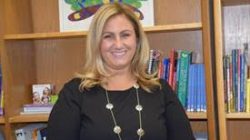Dr. Timothy Lisante teaches in the St. Rose/ CITE SBL program, and was recently featured in this post from Chalkbeat. We caught up with him to check in on his impressive career.
Please give us your name and current job.
TIMOTHY LISANTE, PhD. SUPERINTENDENT
You are the Superintendent for District 79 — what’s unique about that district?
I directly supervise 11 principals of city wide, multi-sited schools. We have 169 school sites in traditional and non-traditional settings throughout NYC. Principals of multi-sited schools have challenges in addition to those of a single building principal. Thus, my team and I must provide customized support for our principals and assistant principals.
A second unique factor of D79 is that we have a “Zero Reject” policy and “Rolling Registers” meaning continuous admissions and discharges. Our District team works with schools in organizing curriculum course content and administrative functioning to address the continuous “Ins and Outs” of the students.
What are some challenges that multi-site school leaders face, and how do you help prepare/support them?
Several key foundations of school leadership are challenging in multi-sited schools. Communication is much more diffused. Relationship building is more difficult due to lack of proximity. Conducting PLCs are more cumbersome if your teachers are throughout a city or county. Efficient time management is more difficult due to travel between and among sites.
My deputies and I all were principals of multi-sited schools in District 79. Therefore we are in an experienced position to coach school leaders with the unique attributes mentioned above.
In what way is District 79 similar to other districts?
D79 has similar accountability measures as to Teacher Practice and Principal Performance. Our HS programs are under NYS measures of students learning. Our HS Equivalency programs are under separate NYS accountability metrics.
You were an administrator for a school on Rikers Island. How did that shape your views as an administrator?
My correctional education experience helped form me as a school leader as we couldn’t turn away any student. We needed to develop programs no matter what the student’s reading level or home language. These sites tend to have students with a wide range of academic skill levels and many social/emotional learning needs. It’s not uncommon in correctional education sites to have non-readers across the hall from college-bound students (with most students reading around 6th grade level.) Thus, we had to fit our course offering/schedules/support to the needs of the students as opposed to schools who accept/screen students who fit into their system.
In terms of your educational philosophy, what has carried over from your position at the school at Rikers to your current position in District 79?
We as Educational Leaders need to actualize “sound bites” so that EVERY Student Succeeds; ALL Children Come First and, truly, NO Child gets Left Behind. Great teachers get every student to reach their potential. There’s no great schools without a great principal.
In the Chalkbeat article, you mention that these students often have no advocates — in what ways do you try to get them support? How do you as a Superintendent transfer that to the other educational leaders in your district?
Part of the Frameworks for Great Schools is a supportive environment. Social Emotional Learning seems to have taken a back seat in school reform movements. As Educational Leaders we need to know the authentic needs of our students and for every risk factor, provide a supportive component. I think we should practice “Maslow” in addition to “Danielson.’’
How does that impact professional development or staffing for your district?
Customizing professional development with our school leaders is challenging for a couple of reasons. We have Early Childhood Education, Middle School programs, HS programs; Career & Technical Education and the largest HS Equivalency prep program in the city. Our students range from 8-weeks-old through 21-years old. About of 20% of District 79 students are English Language Leaners and 30% are Students With Disabilities.
These diversities in our student population led us to concentrate on two coherent, central, year-long themes for professional learning: Supervising Literacy Instruction and Trauma–Informed Care.
Can you tell us a bit more about Trauma-Informed Care?
Trauma Informed Care is a better understanding of the effects of poverty, family mobility, violence, etc. on the academic performance and social/ emotional welfare of our students. As school leaders we must heighten this awareness with all those who work in the school community: teachers, administrators, counselors, School Safety Officers and District support teams.
When you’re teaching for the St. Rose SBL program, what experiences do you bring to the SBL program’s classroom?
I think my St Rose SBL Program students enjoy the class because I’m sharing the responsibilities of the district level in real time: hiring, supporting and evaluating principals; student performance accountability; professional development for principals, assistant principals, teachers and counselors; family and community engagement and staying in compliance especially with Special Education, ELL and student discipline regulations.
What have you learned that you are trying to impart to the SBL students about setting their school goals or culture?
Major themes in our leadership classes include communicating how we in D79 continuously reflect upon, interconnect, and implement our shared vision. We look always to develop strategies and interventions to ENGAGE (and, many times, RE-ENGAGE students); to EMPOWER them through accelerated skills development via rigorous instruction and to see students EXCEL as graduates prepared for college and the workforce.
A key to Educational Leadership work is always focusing on student achievement progress.
What have you learned through your experiences that you wish other educational leaders could know?
One of the proudest things to me is when I am referred to as a “Field–Based Superintendent.” NYS Regent Lester Young once said to me a Superintendent should be in 2 schools a day. I practice that edict having visited 451 school sites last year. Being visible and accessible are essential traits of Educational Leadership.
Dr. Lisante teaches in the St. Rose / CITE SBL Program where he trains educational leaders.
CITE is the Center for Integrated Training and Education. For over 25 years, CITE has and continues to train TEACHERS (Early Childhood, Professional Certification, Special Ed,Grad Courses, Bilingual courses, DASA); COUNSELORS (School, Mental Health Masters, Advanced Certificate); and ADMINISTRATORS (SBL, SDL, Public Admin, Doctorate) in all five boroughs of NYC, Yonkers, Westchester, and Long Island.
CITE PD offers CTLE-approved in-school professional development tailored to your school’s needs and your vision. Info: citepd.com
What does your career need? We can help you get there. 877-922-2483









